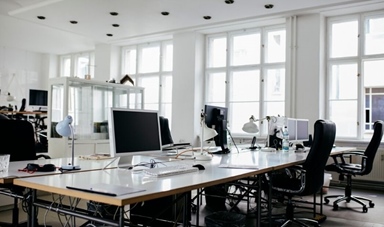Loading component...
At a glance
By Johanna Leggatt
Our work environments have changed immeasurably over the past month owing to the disruptive impact of the coronavirus crisis.
Earlier this year, many of us commuted to an open-plan office in a major city CBD, but now we’re hurriedly signing up for Zoom and panic buying computer monitors in order to work from home.
But does our new working-from-home arrangement spell a departure from the norm, or is it the new normal?
According to HR professional Tanya Siggins, founder of Zest Boutique Consultancy and Coaching, “the horse has bolted”.
“I don’t think things will ever magically return to how they were,” Siggins says. “The longer people do things differently, the more habitual it becomes.”
Work revolution
Social scientist at ThoughtWorks Nigel Dalton argues that as businesses have been forced to mobilise entire workforces to work remotely, they have “set us on a path to a revolution in the way we work”.
“In fact, where businesses once saw workplace changes unfolding over years, because of the pandemic we now see the future of work revolution accelerated,” he says.
Dalton argues that, post COVID-19, many companies will establish a hybrid work model, in which we stick with what works and change what doesn’t.
“The old model was a synchronised, lock-step, clock-in work world, and is 100 years old at least,” Dalton says.
“Gone are the days where 60,000 people commute to central Sydney only to communicate with people via (instant messaging platform) Slack.”
Siggins believes, however, that – initially – there will be a post pandemic bounce back in which workers return to the traditional office.
“Workers will initially crave routine and structure, as well as the ritual of commuting that enables them to switch into work mode,” she notes.
However, once employees have proven they can work from home, Siggins predicts they will start a conversation about flexible working.
“They will remember what they liked about working from home, and that demand will start to happen from the employee level,” Siggins says.
True flexibility
Siggins says for workspaces to become truly flexible, the policies need to be all encompassing.
“Most flexible work arrangements tend to be very rigid, and flexible in only one particular way, but they do not serve a wide range of workers,” she says.
True flexibility would allow workers to choose greater freedoms in their work lives, such as when they start work.
“What this work-from-home situation is doing is connecting people back to their passions, such as walking the dog first thing in the morning or doing an early morning yoga class and starting work later,” Siggins says.
Dalton says once social distancing restrictions are lifted businesses are likely to set up satellite work pods in areas where a small number of co-workers live.
“The benefit is workers still have some social contact, but there is no CBD commute,” he notes.
“People will still see each other, as teams still need to spark off each other, and that is harder to engineer over Zoom.”
Workers, he imagines, will work from the office three days a week and two days from home.
“My dream is that we get this massive productivity boost in being able to cater to those who didn’t fit the factory model of work, whether it’s women who are parenting or disabled people,” he says.
How about hot-desking?
While Siggins imagines some offices will embrace hot desking it’s far from universally loved.
“While some people may love it, others prefer having a designated space to make theirs and put up family photos,” Siggins says.
“Shared offices among part-time workers may be a better middle ground between designated spaces and hot desking.”
Siggins does, however, see room for more “collaboration spaces” within the office environment.
“There may be more tall tables where people can hold standing meetings and plug their laptops in and it becomes an organic interaction between colleagues,” she says.
Offices, Dalton notes, will continue their trend towards flatter management structures, with leaders deeply embedded in strategy.
“Managers will need to be able to drop in on Slack meetings and understand the difference between micromanagement and an encouraging emoji,” he says.
In terms of home technology, Dalton points out that it’s more important to keep abreast of communication platforms.
“The tech that is really oiling the wheels is Slack and Zoom,” he says.
While we will all rely more on home tech, you don’t need to drop a bundle on expensive gear.
“You don’t need a lot of tech at home, you just need a good laptop, an ergonomic chair, and a separate screen,” Dalton says.

